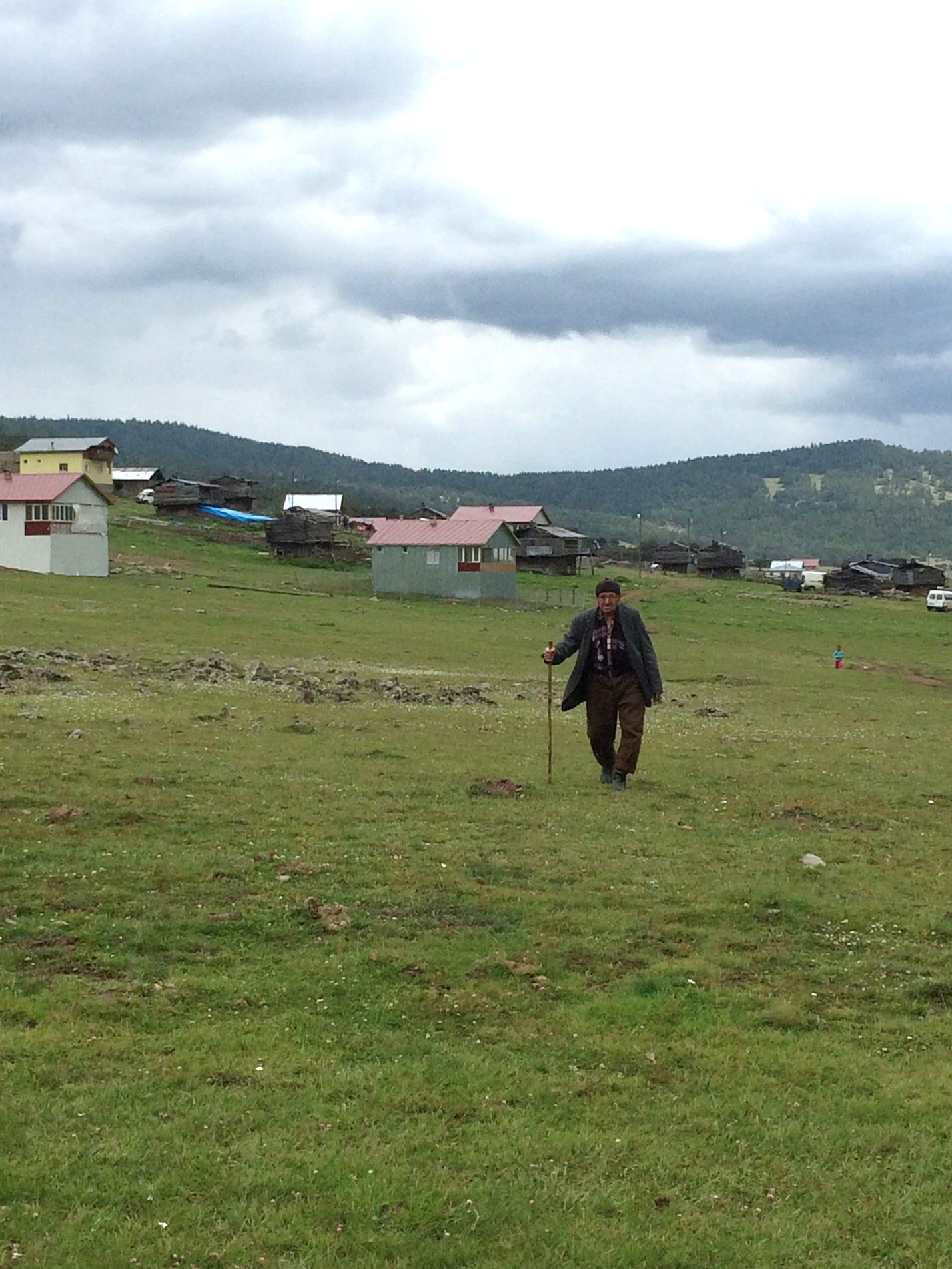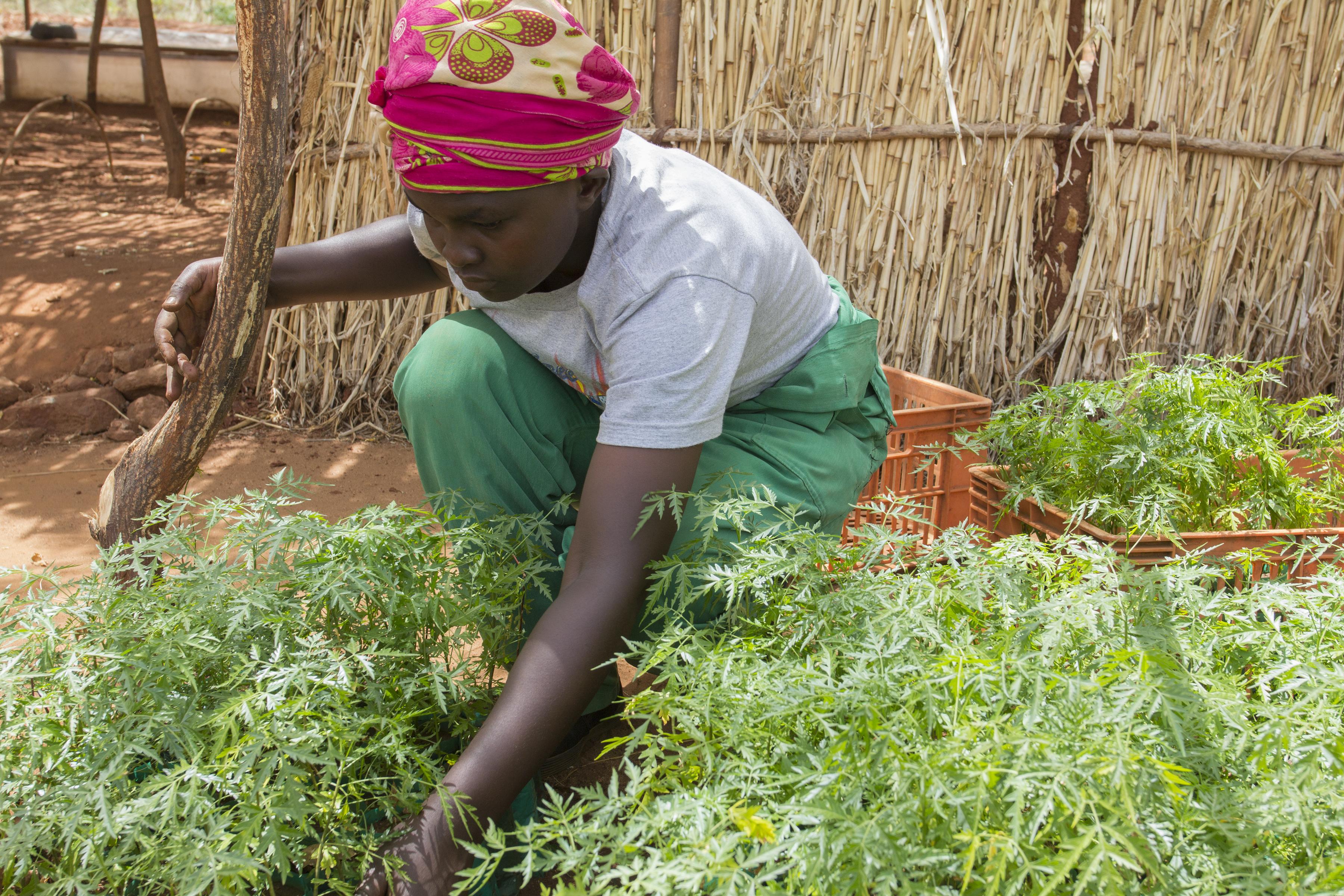Activity page

Turkey Forest Villages: Socioeconomic study of forest villagers to better understand the causes of out-migration, forest dependence and poverty
CHALLENGE
In Turkey, forest villagers constitute a significant proportion of the country’s poor and are viewed as an important resource for managing forests. Similarly, forests provide the villagers with an important source of direct employment and a supply of subsistence goods and services. Over the past 35 years, migration to urban areas has reduced the population of forest villages from 18 to 7 million—a level that forest authorities consider critically low to adequately manage upland ecosystems sustainably.
Moreover, many of the migrants were of working age, leaving the work of properly managing the forests and pastures to the remaining population, which now consists of the old and very young. The declining rural populations and the changing demographics of the villages frequently lead to issues such as the overgrazing of livestock near settlements; increased use of fire for managing pastures, with increased risks of uncontrolled burning; ecological changes in the habitat area that may threaten endangered species; and a decline in important forest maintenance activities like tree thinning.
APPROACH
This activity aims to inform forest policy through a survey of forest villagers on forest dependence, poverty, and migration in Turkey. The survey will seek to determine how forest villagers are dependent on forests, pastures, and forest services (such as non-timber forest products) for their income, subsistence, and wellbeing. In addition, the study will investigate whether forests represent a pathway out of poverty (or not), and some of the specific determinants of migration.
RESULTS
Analysis of the surveys revealed the following challenges:
- Poverty rates are high and unequally distributed. The poverty rate in forest villages is approximately 80%, which is more than twice the average rural poverty rate in Turkey. And although a region’s overall poverty rate might be low, it could harbor high-poverty forest villages - an important consideration when designing targeted social protection programs.
- Poorer forest-village households appear to be held back by their high forest-dependency and lack of income diversification. Approximately a quarter of poor households receive income only from forests, compared to 2% of non-poor households. Relatively more prosperous households supplement forest income with income from livestock, agriculture, and pensions. Female participation rates in the labor force are highest among villages with high poverty, suggesting that many women engage in economic activities with low returns.
- Growing out-migration is most prevalent among forest-dependent households, which poses a threat to the current forest management model owing to its reliance on forest village labor supply. Although migration reduces the pressure on forests, the costs of insufficient forest management will be higher in the long run. A model that improves the sustainability of forest-use among villages and directs forest collection and services towards more profitable opportunities will ensure that both communities and forests will thrive.
- Poor households benefit disproportionately from access to productive assets and cash transfers (such as pensions and remittances). Policy simulations reveal that a combination of credit programs and basic income support is the most effective channel for overall poverty reductions and targeting the poor.
With increasing out-migration to cities, women are becoming the main income earners in rural households.
Findings from the surveys were incorporated into the accompanying Forest Policy Note, and informed Turkey's 5-year Strategic Plan on Forests (2017-2012). Specifically, the activity's findings are reflected in the Strategy's priority actions, and fed into a section on interventions that create and scale-up economics opportunities for forest villagers.
A more long-term outcome of this activity is the availability of information for targeting social programs to the poorest households (e.g. households with fewer assets, households with less diversified income, members of forest cooperatives, etc.). For instance, future support to the forest villages should take into account the fact that, with incrasing out-migration to cities, women are becoming the main income-earners in rural households, which could impact the development of income opportunities through forest cooperative activities.
For stories and updates on related activities, follow us on twitter and facebook , or subscribe to our mailing list for regular updates.
Last Updated : 06-16-2024
Share
Attachments
Keywords
Authors/Partners
ISRIC World Soil Information and Wageningen UR
Targeting Watershed Rehabilitation Investments in Turkey
CHALLENGE
The Government of Turkey has become a global leader in the fight against soil erosion, by making extensive investments in rehabilitating degraded landscapes. With support from the World Bank, poor communities in upland catchments have been engaged in developing and implementing a program of watershed rehabilitation. This integrated approach has succeeded in helping to tackle the problem of poverty in these communities. It has also succeeded as a model for rural service delivery by providing a platform for multiple government institutions to work together to be responsive to locally identified constraints and needs.
One weakness of the approach, however, is that the selection of the most critical catchments for investment in land rehabilitation activities remains somewhat subjective. The current choice of investments which seek to balance the need to rehabilitate badly degraded areas with prevalence of rural poverty and areas hard-hit by urban migration are based largely on perceptions.
APPROACH
This project seeks to identify land degradation hot spots in Turkey, and, working with available datasets on wealth and poverty in Turkey, overlay these with information on where the poorest households are most vulnerable to the problem of land degradation.
The findings will be useful for the Ministry of Environment and Forestry to better target its already extensive investments in watershed rehabilitation on the most critical areas in Turkey where land degradation is both a serious problem and where problems of poverty are most severe and improve the efficiency of public spending on watershed rehabilitation.
The findings will also be linked to ongoing national policy and institutional processes, to complement Turkey’s Action Plan for Combating Deforestation, the measures outlined in the 9th National Development Plan which focus on reducing land degradation, and institutional measures which are expected to complement Turkey’s efforts with respect to accession to the European Union.
RESULTS
This activity is ongoing. Findings will be shared on this page when they become available. You can also follow us on twitter (twitter.com/forestideas) or subscribe to our mailing list for regular updates.
For stories and updates on related activities, follow us on twitter and facebook , or subscribe to our mailing list for regular updates.
Author : ISRIC World Soil Information and Wageningen UR
Last Updated : 06-16-2024

Share
Related Links
Understanding Forests Contribution to Poverty Reduction
Bringing Forest and Poverty into Focus in Argentina
Attachments
Keywords
Forest-SWIFT Methodology for High-Frequency Forest-Poverty data collection
CHALLENGE
Around 1.3 billion people – most of them living on less than $1.25 a day - rely on forests for some part of their livelihood. However, detailed, country-specific data is still lacking when it comes to forests’ socio-economic contributions and their role in poverty alleviation. Without this information, forests may be overlooked in national development strategies. This activity aims to contribute to knowledge on forest’s contribution to movements out of poverty by using a new and innovative approach to forest-poverty data collection.
APPROACH
A new tool, Forest-SWIFT (Survey of Wellbeing via Instant and Frequent Tracking) is being developed to collect information to document who the poor are, where they live and how they rely on forests. Forest-SWIFT combines the latest statistical methods with in-person interviews using smart phones or tablets, and also functions offline where mobile coverage or technology is limited. Survey data is collected on a central server, where it can be rapidly accessed, analyzed, and used to design more effective projects or policies.
The tool consists of 10-15 questions to strongly estimate forest reliance, a set of 10-15 questions to strongly estimate poverty, and a set of questions on governance. The tool methodology was developed by (i) modeling income (cash and non-cash) from forest to estimate forest reliance; (ii) modeling consumption/income models to estimate poverty; and (iii) identifying forest governance data. The tool is being field tested in Turkey, Argentina and Mozambique.
Forest-SWIFT can be used to complement the Living Standards Measurement Study (LSMS) Forestry Module. The LSMS Forestry Module is carried out every three years, and Forest-SWIFT can easily be carried out in the interim two years, to create a rich and comprehensive knowledge base on forests and poverty. Forest-SWIFT promises improved monitoring of forest projects, better targeting of beneficiaries of forest interventions, and more effective programs and policies that help to reduce poverty and enhance the economic, social and environmental benefits derived from forests.
RESULTS
This project has been completed. The main outcome of Forest-SWIFT was to equip policymakers with evidence emphasizing how forests are important for the poorest’ welfare and with a robust tool monitor the impacts of their forest interventions on beneficiaries’ welfare. The project emphasized the need for poverty reduction initiatives including more forest and its specificities.
Turkey
Using Forest-SWIFT data collected in 2017, this activity found that poverty in Turkey was 23.2%, which reflects the poverty decline observed in the rest of the country. On average, forest households had more forest income in 2017 than they did in 2016. Forest dependence - as the ratio of forest income on consumption – was found to be 51% for poor households and 32.6% for non-poor households.
Thanks to the model and collected data, Forest-SWIFT work in Turkey highlights the importance of forest resources for households’ livelihoods. Measures of forest income show that households are more dependent on these resources but returns from these activities are low; analysis of this measure of income couldidegu the General Directorate of Forest (GDF) of Turkey on how to increase returns from forest activities. In addition, Turkey has now a reference point on poverty within forests, which could help monitor how projects and interventions affect poverty in these areas.
Using lessons from Forest-SWIFT in Turkey, the activity is informing additional forest projects on how to collect forest income data and work with the poverty team to strongly measure poverty in their projects.
Armenia
In Armenia, Forest-SWIFT has been taken up by the Armenia Statistic Committee. This activity provided poverty rates not only for forest areas but also for the whole country. The data will inform the State Forest Committee on the importance of fuelwood to fulfil energy needs by poor and non-poor households in forest areas, rural and urban areas.
Tunisia
In Tunisia, although the existing data did not allow the use of the SWIFT methodology, the activity found that types of water source, assets, type of dwelling, occupation of household head are correlated to forest income. The data collected can be used to predict consumption and forest income in the future.
Forest-SWIFT continues to promote the need for more detailed data on forest livelihoods to understand poverty in forest areas and to have more robust measure of poverty in investment projects. The Brazil country team has expressed great interest to use Forest-SWIFT to analyse poverty in the Amazon ecoregion.
Thanks to Forest-SWIFT, teams can use a short set of questions to collect poverty and forest income determinants. These determinants are identified in a baseline model (one model for poverty and one model for forest dependence) using a linear regression but controlling for issues linked to over-fitting by using stepwise regressions. Once the determinants have been collected, the team can predict poverty and forest dependence using the betas from each baseline model and multiple imputation regression techniques. This activity consisted of testing a methodology to collect in a short and efficient manner data on poverty and forest dependence. This activity can be embedded in the monitoring and evaluation framework of IPF working on forests.
For stories and updates on related activities, follow us on twitter and facebook , or subscribe to our mailing list for regular updates.
Last Updated : 06-15-2024








